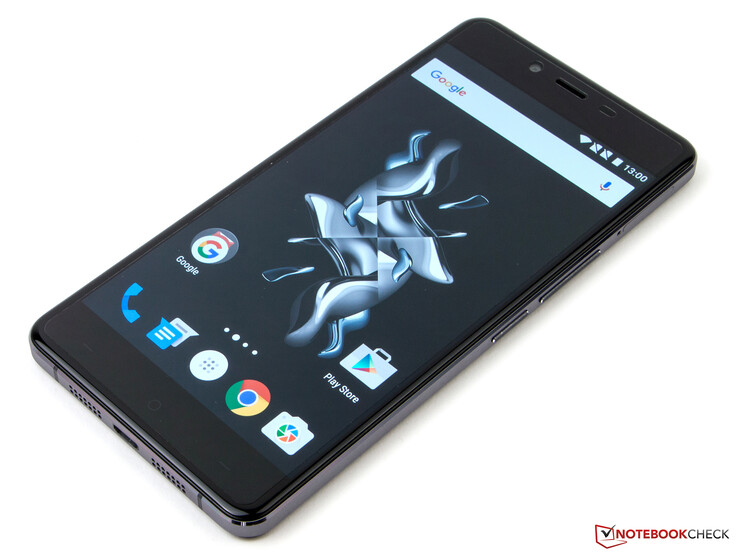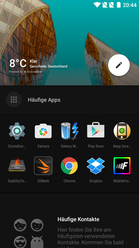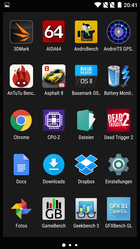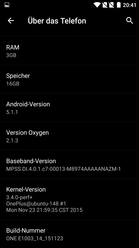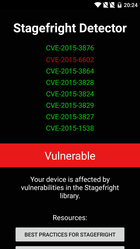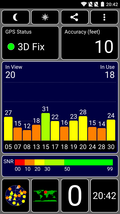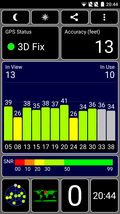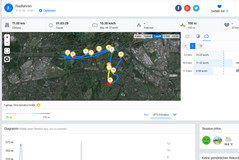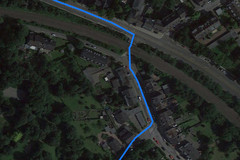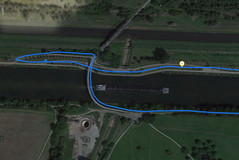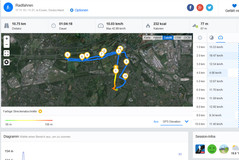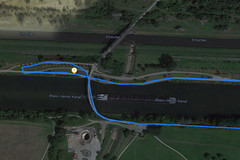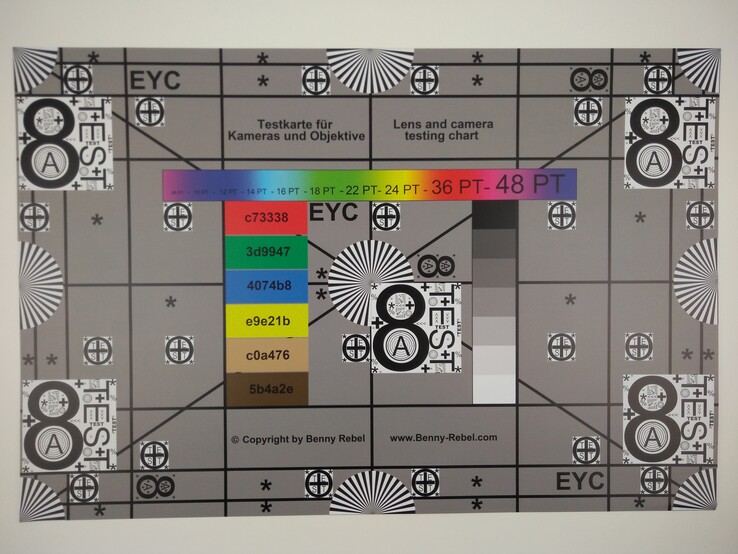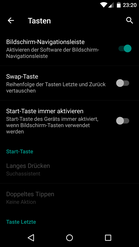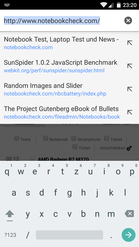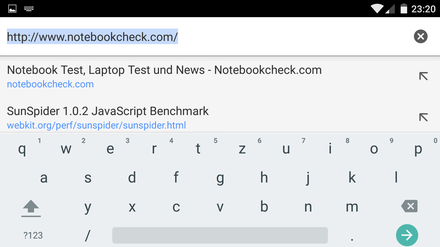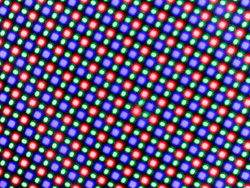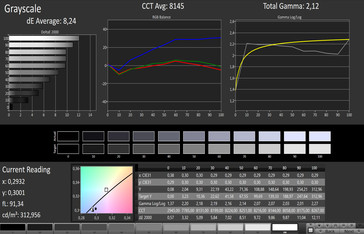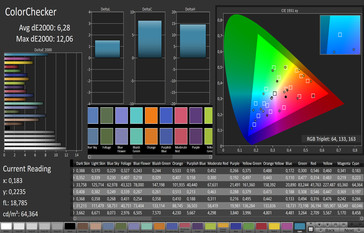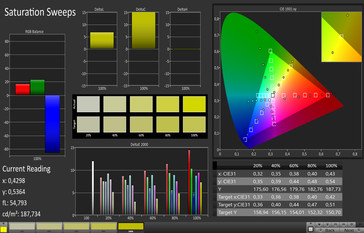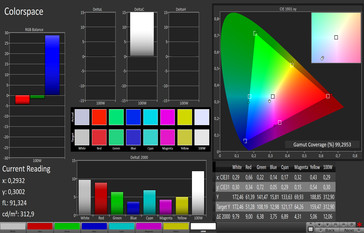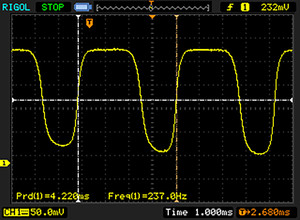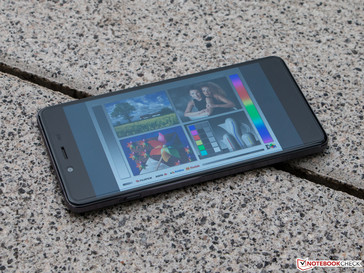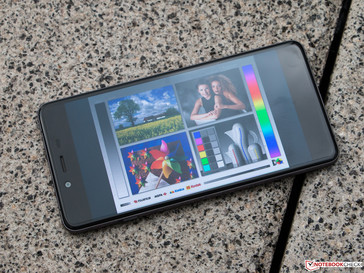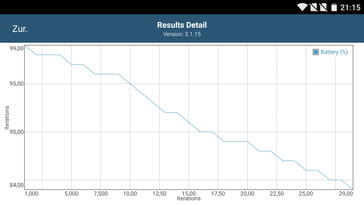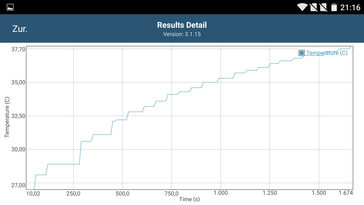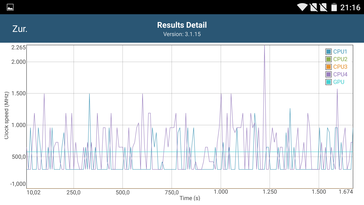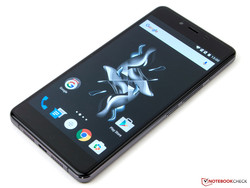OnePlus X Smartphone Review
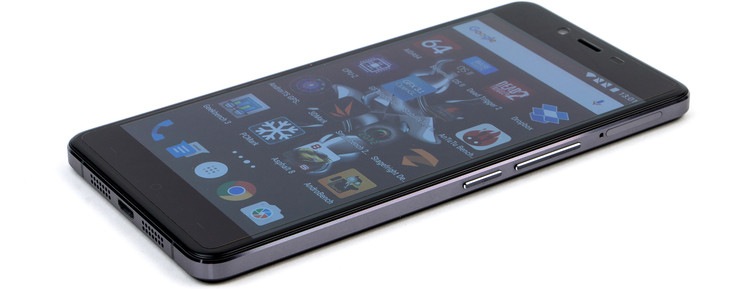
For the original German review, see here.
The technical specs of OnePlus' X look very similar to that of the One at first glance. However, some differences are found in the details. The review sample is only available with 16 GB of internal storage, but it can be expanded via a micro-SD card. The buyer could only choose between a 16 and 64 GB model for the Chinese manufacturer's first handset; only the latter is still available. The premium models generally do not allow expanding the storage. Besides that, the One features the fastest Snapdragon 801 while the X model can fall back on an 801 AA with an identical speed as the former Snapdragon 800. The review sample is currently priced at 269 Euros (~$291) plus shipping in the manufacturer's online shop.
We looked at smartphones in a similar price and size range for comparison devices. Sony's Xperia M4 Aqua, Microsoft's Lumia 640 and LG's G3 are among them. The latter is a high-end product from last year that is now on a comparable price level, and which has a similar SoC. LG's Flex 2 is also now sold for under 300 Euros (~$324).
Case
The casing of OnePlus' X looks entirely different than that of both other models. Corning Gorilla Glass 3 is used on both the front and rear. The smartphone is fairly slim at 6.9 millimeters and is pleasant to hold. The grooved metal bezel noticeably contributes to that, and its looks highlight its quality impression.
The glass has very good gliding traits, but that, unfortunately, is true for all surfaces. Thus, even the slightest tilt is enough to lose the grip on OnePlus' X. Although the handset is very stiff, it produces a loud cracking noise at a certain degree. However, that should not happen in routine use. The gaps are accurate and no wide spaces evolve. An additional protector layers the screen ex-factory, which creates quite unsightly edges and refracts the panel's light.
The metal card tray makes a very rigid impression. It supports either two nano-SIM cards or a micro-SD in place of a second SIM card. The slot is a bit narrow; the card tray is only difficult to reinsert when it's filled.
Connectivity
OnePlus' X again relies on a conventional micro-USB port (micro-AB) and does not yet make use of the newer Type C port. The interface can transmit data in accordance to USB 2.0 specifications and also supports OTG that, however, has to be first enabled in the settings. The interface does not support image transmission, and DLNA is also absent.
Like the first OnePlus smartphone, the X model also supports storage expansion via micro-SD cards with a maximum of 128 GB. The corresponding, compatible apps can be moved easily to the additional storage.
The small lever in the casing's bezel for controlling the smartphone's notification behavior, which we know from OnePlus' 2, is also installed in this handset.
Software
Like OnePlus' 2, the X model relies on the proprietary Android derivative OxygenOS. The version 2.1.3, based on Android 5.1, was preloaded at test time. It is not very different to the stock Android version but allows some more advanced settings for app authorizations. More details can be found in the review of the OnePlus 2.
Communication & GPS
OnePlus' X connects to mobile Internet via HSPA+ (max. 42 MBit/s download) or LTE Cat.4 (max. 150 MBit/s download). Furthermore, all data connections have a wide frequency coverage, making reception issues within Europe unlikely.
The smartphone's Wi-Fi module only supports the IEEE 802.1 b/g/n standards and thus only transmits in the 2.4 GHz network. That is sufficient for everyday needs, and the Wi-Fi connection proved stable with a good range in real-world use. The handset still displayed a good connection quality at a distance of ten meters from the access point (Devolo dLAN Wi-Fi 1200+ ac) separated by two walls. Websites opened quickly. Bluetooth 4.0 is also on-board, but NFC is not installed.
OnePlus' X uses GPS, Glonass and BeiDou satellites for localization. Tracking is also quite fast and accurate indoors. It is even a touch faster outdoors.
We compared the smartphone with the Garmin Edge 500 bike navigation system to check tracking accuracy. Although OnePlus' X deviated by only approximately 2.3% from the GPS expert, it will make quite a difference on longer routes. That is particularly evident in the vicinity of the bridge. The smartphone did not even notice our short loop while the Garmin system recorded the trip. Nevertheless, the performance is absolutely sufficient for navigating.
Telephone & Call Quality
The phone app in OnePlus' X corresponds to the stock Android app and does not present any modifications. The call quality is of a good standard. We could always understand our contact when holding the device to the ear, although his voice was somewhat muffled. Minor interruptions were rare at the other end, and the voice of the other user sounded a bit distorted, but was well-intelligible. Although the microphone overdrove slightly when using the speaker, we were still well-intelligible. We were still understood well even when the smartphone was placed on a table. There were no significant restrictions otherwise as long as the call was made in a quiet environment.
Cameras
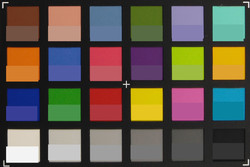
The front camera in OnePlus' X has a generous resolution of 8 megapixels and is therefore nominally good for selfies. However, the settings are limited to only a simple Beauty mode that lets the photo look a bit warmer and utilizes a weak soft-focus.
The primary camera on the rear achieves up to 13 megapixels and can fall back on auto-focus and HDR. However, the latter has to be enabled manually. Apart from a panorama, time-lapse and slow-motion feature, there are hardly any setting options. The camera release responds quite fast, which should make taking snapshots possible.
The photo quality is decent. It could do with a somewhat higher sharpness, and a minor reddish tint is visible in the comparison screenshots.
We took a picture of the test chart under controlled light conditions. They clearly show that the sharpness strongly decreases towards the edges and details are also lost. Besides that, aberrations slip into the color gradients of light green over yellow up to orange. We checked the lens' color accuracy with ColorChecker Passport. The colors look a bit too strong, which will not prove annoying in real-world use. The automatic white balance is also somewhat too warm.
The smartphone can record videos in Full HD. The quality will certainly be enough for short clips, but the overall performance is rather middling. Ultra HD or HFR recordings are not supported.
Accessories
OnePlus ships its X with a modular power supply, USB cable, SIM tool and a transparent silicon sleeve. The Chinese manufacturer's online store also offers diverse sleeves (starting at 15 Euros, ~$16) and universal accessories, such as headphones and cables.
Warranty
OnePlus only includes a 12-month warranty on its smartphone. A so-called On-Guard insurance for 12 or 24 months can also be added in the ordering process. It additionally covers liquid damage, broken screens and even vandalism, and it costs 40 (~$43, 12 months) or 65 Euros (~$70, 24 months).
Input Devices & Handling
The sleekness of the capacitive touchscreen is very good, and the handset responds impeccably even at the edges. The screen can identify up to ten fingers at the same time. OnePlus' X uses the stock Android keyboard layout.
Like in OnePlus' 2, it is possible to fade out the onscreen system buttons and use the sensor keys under the screen instead. These keys can also be mapped with additional functions.
The physical keys have a clear and crisp pressure point and do not give reason for complaint.
Display
The screen in OnePlus' X has a size of five inches and a resolution of 1920x1080 pixels (Full HD). That equals a pixel density of approximately 441 PPI and content is razor-sharp. The Chinese manufacturer uses an OLED panel for the first time.
We determine the brightness on a pure white background using maximum brightness and disabled ambient light sensor. That results in a very homogeneous illumination at a maximum brightness of 330 cd/m². That even climbs up to 430 cd/m² at an APL of 50. We did not observe a further increase in brightness with enabled sensor.
The underlying OLED technology results in an impeccable and rich black, and thus a theoretically endless contrast.
| |||||||||||||||||||||||||
Brightness Distribution: 91 %
Center on Battery: 312 cd/m²
Contrast: ∞:1 (Black: 0 cd/m²)
ΔE ColorChecker Calman: 6.28 | ∀{0.5-29.43 Ø4.77}
ΔE Greyscale Calman: 8.24 | ∀{0.09-98 Ø5}
Gamma: 2.12
CCT: 8145 K
| OnePlus X Adreno 330, 801 MSM8974AA, 16 GB eMMC Flash | OnePlus One Adreno 330, 801 MSM8974AC, 64 GB eMMC Flash | Sony Xperia M4 Aqua Adreno 405, 615 MSM8939, 8 GB eMMC Flash | Microsoft Lumia 640 Adreno 305, 400 MSM8226, 8 GB eMMC Flash | LG G3 Adreno 330, 801 MSM8974AC, 16 GB eMMC Flash | LG G Flex 2 Adreno 430, 810 MSM8994, 16 GB eMMC Flash | |
|---|---|---|---|---|---|---|
| Screen | 15% | 37% | 38% | 20% | -5% | |
| Brightness middle (cd/m²) | 312 | 423 36% | 547 75% | 433 39% | 417 34% | 278 -11% |
| Brightness (cd/m²) | 314 | 408 30% | 535 70% | 429 37% | 395 26% | 274 -13% |
| Brightness Distribution (%) | 91 | 83 -9% | 92 1% | 95 4% | 89 -2% | 97 7% |
| Black Level * (cd/m²) | 0.54 | 0.81 | 0.52 | 0.96 | ||
| Colorchecker dE 2000 * | 6.28 | 5.56 11% | 5.77 8% | 3.42 46% | 5.67 10% | 8.03 -28% |
| Greyscale dE 2000 * | 8.24 | 7.55 8% | 5.87 29% | 3.03 63% | 5.66 31% | 6.71 19% |
| Gamma | 2.12 104% | 2.33 94% | 2.14 103% | 2.16 102% | 2.53 87% | 1.89 116% |
| CCT | 8145 80% | 7624 85% | 7784 84% | 7081 92% | 7741 84% | 7750 84% |
| Contrast (:1) | 783 | 675 | 833 | 434 | ||
| Color Space (Percent of AdobeRGB 1998) (%) | 72.0875 | 59 | ||||
| Color Space (Percent of sRGB) (%) | 96.5753 |
* ... smaller is better
The OLED screen in OnePlus' X presents the typical, highly saturated colors. That cannot be adapted; there are no different profiles like in Samsung's Galaxy S6 (edge), either.
The color accuracy is not particularly good, either. The grayscale levels present a DeltaE of 8 and the mixed colors 6. The bluish tint in the latter primarily strikes the eye and leads to a sooner cool reproduction of screen content.
Screen Flickering / PWM (Pulse-Width Modulation)
| Screen flickering / PWM detected | 237 Hz | ≤ 25 % brightness setting | |
The display backlight flickers at 237 Hz (worst case, e.g., utilizing PWM) Flickering detected at a brightness setting of 25 % and below. There should be no flickering or PWM above this brightness setting. The frequency of 237 Hz is relatively low, so sensitive users will likely notice flickering and experience eyestrain at the stated brightness setting and below. In comparison: 53 % of all tested devices do not use PWM to dim the display. If PWM was detected, an average of 8091 (minimum: 5 - maximum: 343500) Hz was measured. | |||
Performance
The performance specs of OnePlus' X are allegedly on par with last year's high-end smartphones. However, that is not quite true. Although the Qualcomm Snapdragon 801 MSM8974AA comes from this platform, it is the weakest SoC in the lineup while last year's premium models, such as LG's G3, mostly relied on the strongest AC versions. Their CPUs only have a slightly higher clock rate, but particularly the GPU is stronger. The review sample also nominally uses the Adreno 330, but at a lower clock. However, the 3 GB of working memory is lush. A drawback of the old SoC is that it is not yet 64-bit capable.
That is not noticed as much in the benchmarks. Although the SoCs in some rivals are faster, the differences in CPU performance are not tremendous. That looks different in the graphics benchmarks. LG's Flex 2 is the exception in all sectors; it sports the latest high-end Snapdragon 810 SoC. However, OnePlus' X can outperform even that in PCMark, which is owed to the system's slim architecture. OxygenOS generally runs very smoothly. This year's equally expensive rivals with a noticeably weaker SoC are defeated.
| AnTuTu v5 - Total Score (sort by value) | |
| OnePlus X | |
| OnePlus One | |
| Sony Xperia M4 Aqua | |
| LG G3 | |
| LG G Flex 2 | |
| Geekbench 3 | |
| 32 Bit Single-Core Score (sort by value) | |
| OnePlus X | |
| OnePlus One | |
| HTC One M8 | |
| Sony Xperia M4 Aqua | |
| LG G3 | |
| LG G Flex 2 | |
| 32 Bit Multi-Core Score (sort by value) | |
| OnePlus X | |
| OnePlus One | |
| HTC One M8 | |
| Sony Xperia M4 Aqua | |
| LG G3 | |
| LG G Flex 2 | |
| 3DMark | |
| 1280x720 offscreen Ice Storm Unlimited Score (sort by value) | |
| OnePlus X | |
| OnePlus One | |
| HTC One M8 | |
| Sony Xperia M4 Aqua | |
| LG G3 | |
| LG G Flex 2 | |
| 1280x720 offscreen Ice Storm Unlimited Graphics Score (sort by value) | |
| OnePlus X | |
| OnePlus One | |
| HTC One M8 | |
| Sony Xperia M4 Aqua | |
| LG G3 | |
| LG G Flex 2 | |
| 1280x720 offscreen Ice Storm Unlimited Physics (sort by value) | |
| OnePlus X | |
| OnePlus One | |
| HTC One M8 | |
| Sony Xperia M4 Aqua | |
| LG G3 | |
| LG G Flex 2 | |
| 2560x1440 Sling Shot OpenGL ES 3.0 (sort by value) | |
| OnePlus X | |
| Sony Xperia M4 Aqua | |
| LG G3 | |
| 2560x1440 Sling Shot OpenGL ES 3.0 Graphics (sort by value) | |
| OnePlus X | |
| LG G3 | |
| 2560x1440 Sling Shot OpenGL ES 3.0 Physics (sort by value) | |
| OnePlus X | |
| LG G3 | |
| GFXBench 3.0 | |
| on screen Manhattan Onscreen OGL (sort by value) | |
| OnePlus X | |
| OnePlus One | |
| HTC One M8 | |
| Sony Xperia M4 Aqua | |
| LG G3 | |
| LG G Flex 2 | |
| 1920x1080 1080p Manhattan Offscreen (sort by value) | |
| OnePlus X | |
| OnePlus One | |
| HTC One M8 | |
| Sony Xperia M4 Aqua | |
| LG G3 | |
| LG G Flex 2 | |
| PCMark for Android - Work performance score (sort by value) | |
| OnePlus X | |
| OnePlus One | |
| Sony Xperia M4 Aqua | |
| LG G3 | |
| LG G3 | |
| LG G Flex 2 | |
| Smartbench 2012 | |
| Productivity Index (sort by value) | |
| OnePlus X | |
| OnePlus One | |
| HTC One M8 | |
| Sony Xperia M4 Aqua | |
| LG G3 | |
| LG G Flex 2 | |
| Gaming Index (sort by value) | |
| OnePlus X | |
| OnePlus One | |
| HTC One M8 | |
| Sony Xperia M4 Aqua | |
| LG G3 | |
| LG G Flex 2 | |
We performed the browser benchmarks on OnePlus' X with the preloaded Google Chrome 46. Internet browsing was always very fast with it. The tests also confirm that, since the smartphone could always place itself up front. Only the Flex 2 defeats it in the Octane benchmark, and it is even first place in Basemark OS II.
| Octane V2 - Total Score (sort by value) | |
| OnePlus X | |
| HTC One M8 | |
| Microsoft Lumia 640 | |
| Sony Xperia M4 Aqua | |
| LG G3 | |
| LG G3 | |
| LG G Flex 2 | |
| Sunspider - 1.0 Total Score (sort by value) | |
| OnePlus X | |
| OnePlus One | |
| HTC One M8 | |
| Microsoft Lumia 640 | |
| Sony Xperia M4 Aqua | |
| LG G3 | |
| LG G3 | |
| LG G Flex 2 | |
| Mozilla Kraken 1.1 - Total (sort by value) | |
| OnePlus X | |
| OnePlus One | |
| HTC One M8 | |
| Microsoft Lumia 640 | |
| Sony Xperia M4 Aqua | |
| LG G3 | |
| LG G3 | |
| LG G Flex 2 | |
| WebXPRT 2015 - Overall (sort by value) | |
| OnePlus X | |
| Sony Xperia M4 Aqua | |
| LG G3 | |
| BaseMark OS II - Web (sort by value) | |
| OnePlus X | |
| OnePlus One | |
| Sony Xperia M4 Aqua | |
| LG G3 | |
| LG G Flex 2 | |
* ... smaller is better
Although the 16 GB eMMC flash memory in OnePlus' X is relatively fast, it does not have much capacity left for other content. In terms of speed, it even outruns its bigger One brother sometimes, and it easily leaves the other mid-range rivals behind.
The storage can be expanded by up to 128 GB via the micro-SD card slot. We tested its speed with Toshiba's Exceria SD-CX32UHS1 (max. 95 MB/s read and 60 MB/s write). The rates were sobering. It only accomplished 18 MB/s in read and 12 MB/s in write.
| AndroBench 3-5 | |
| Sequential Read 256KB (sort by value) | |
| OnePlus X | |
| OnePlus One | |
| HTC One M8 | |
| Sony Xperia M4 Aqua | |
| LG G3 | |
| LG G Flex 2 | |
| Sequential Write 256KB (sort by value) | |
| OnePlus X | |
| OnePlus One | |
| HTC One M8 | |
| Sony Xperia M4 Aqua | |
| LG G3 | |
| LG G Flex 2 | |
| Random Read 4KB (sort by value) | |
| OnePlus X | |
| OnePlus One | |
| HTC One M8 | |
| Sony Xperia M4 Aqua | |
| LG G3 | |
| LG G Flex 2 | |
| Random Write 4KB (sort by value) | |
| OnePlus X | |
| OnePlus One | |
| HTC One M8 | |
| Sony Xperia M4 Aqua | |
| LG G3 | |
| LG G Flex 2 | |
| BaseMark OS II - Memory (sort by value) | |
| OnePlus X | |
| OnePlus One | |
| Sony Xperia M4 Aqua | |
| LG G3 | |
| LG G Flex 2 | |
Games
The Qualcomm Adreno 330 graphics unit integrated in OnePlus' X might not be the swiftest in its lineup, but it is still a fast GPU that can cope with all games currently available in the Play Store. Games like Dead Trigger 2 or Asphalt 8 ran smoothly in Full HD even using a high detail level.
The touchscreen implements inputs quickly, and the sensors also function reliably. However, the speaker could be covered sometimes when playing in landscape mode.
Emissions
Temperature
The surface temperatures of OnePlus' X are exemplary in idle with clearly below 30 °C at all times. That, however, changes palpably under permanent load. The temperatures then climb to over 40 °C over large areas and reach up to 47.5 °C in some places. Although these temperatures are still uncritical, they can be called borderline.
We checked the SoC's reaction to temperature development with the battery test of GFXBench 3.1. The T-Rex test is performed thirty times in succession, and both the battery state as well as frame rates are recorded. The heat is discharged very well. The temperatures on the SoC always remain below 38 °C and the OnePlus X can keep its performance stable.
(-) The maximum temperature on the upper side is 47.5 °C / 118 F, compared to the average of 35.2 °C / 95 F, ranging from 21.9 to 247 °C for the class Smartphone.
(±) The bottom heats up to a maximum of 42.5 °C / 109 F, compared to the average of 34 °C / 93 F
(+) In idle usage, the average temperature for the upper side is 27.1 °C / 81 F, compared to the device average of 32.9 °C / 91 F.
Speaker
Although two speaker grilles are situated in the lower edge of the OnePlus X, only one is installed behind the left grille. The small mono speaker sounds surprisingly good and can achieve a very high volume. The trebles are relatively clear, the mids are only thin, and bass is virtually non-existent. However, the sound is quite compelling for a smartphone.
Users who want more will have to use an external solution. The audio jack transmits the audio signal without interference and static-free seen purely subjectively, and it is thus a useful option. Bluetooth connections also functioned reliably in the test.
Energy Management
Power Consumption
The power consumption of OnePlus' X is comparatively low. It ranges from 0.6 to 1.12 watts in idle. The minimum energy requirement involves a very dark screen of just 3.4 cd/m². Other handsets still have a five times higher brightness even then.
The smartphone also does a good job under load and consumes only 3.2 watts. The power supply has a generous capacity with a nominal output of 10 watts (5 volts, 2 amperes) and has some reserves. Consequently, OnePlus' X is quickly recharged and only needs 92 minutes for completely recharging the battery.
| Off / Standby | |
| Idle | |
| Load |
|
Key:
min: | |
Battery Runtime
The battery in OnePlus' X is suitably sized with 2525 mAh. That, alongside the low consumption rates, results in a very good battery life. The smartphone convinces in both maximum and minimum possible runtimes. OnePlus' X achieves an excellent time that should primarily please gamers particularly in the latter.
The tests using an adapted screen brightness (150 cd/m²) are better for comparison. The review sample prevails over its mid-range rivals in the Wi-Fi test. The field gets a bit tighter in video playback. Only Huawei's P8 Lite falls behind the other models slightly. In total, OnePlus' X presents superb results for its price and performance category.
| OnePlus X Adreno 330, 801 MSM8974AA, 16 GB eMMC Flash | OnePlus One Adreno 330, 801 MSM8974AC, 64 GB eMMC Flash | LG G3 Adreno 330, 801 MSM8974AC, 16 GB eMMC Flash | LG G Flex 2 Adreno 430, 810 MSM8994, 16 GB eMMC Flash | Microsoft Lumia 640 Adreno 305, 400 MSM8226, 8 GB eMMC Flash | Sony Xperia M4 Aqua Adreno 405, 615 MSM8939, 8 GB eMMC Flash | Huawei P8 lite Mali-450 MP4, Kirin 620, 16 GB eMMC Flash | |
|---|---|---|---|---|---|---|---|
| Battery runtime | 39% | -33% | 8% | -11% | -19% | -34% | |
| Reader / Idle (h) | 16.1 | 26.1 62% | 14.2 -12% | 21.2 32% | 18 12% | 13.2 -18% | 11.9 -26% |
| H.264 (h) | 8.6 | 14.9 73% | 4.6 -47% | 12.1 41% | 9.1 6% | 8.6 0% | 6.2 -28% |
| WiFi v1.3 (h) | 9.2 | 16.1 75% | 10.7 16% | 8.4 -9% | 7 -24% | 5.9 -36% | |
| Load (h) | 5.7 | 2.7 -53% | 3.5 -39% | 2.4 -58% | 2.8 -51% | 3.7 -35% | 3.2 -44% |
| WiFi (h) | 18.8 | 7.5 |
Pros
Cons
Verdict
OnePlus' X is actually a well-configured mid-range smartphone at a fair price. However, it is combined with a bitter aftertaste seeing that the former OnePlus One high-end smartphone is superior to the X model in all aspects but its 64 GB version only cost 30 Euros (~$32) more. Unfortunately, it is no longer available, and thus a potential buyer will have to take the reviewed handset because the One does not support storage expansion, and 16 GB is simply too little. The buyer consequently gets a lower configuration at a higher price.
OnePlus' X nevertheless offers a lot for its money. A good Full HD panel is still not a matter of course in this price range. The cameras are decent, the battery life is very good, and the phone's sound is also compelling. The optional storage expansion compensates for the tight flash memory. The mobile wireless connections also have wide frequency coverage, as well as the option of using a second SIM card.
The handset is not the big bargain like OnePlus' One last year. The buyer soon hits the 300-Euro (~$324) mark with the shipping costs, which is more than LG's Flex 2 costs or roughly as much as Honor's 7 that are both strong rivals.
OnePlus X
- 12/03/2015 v4 (old)
Daniel Schmidt




